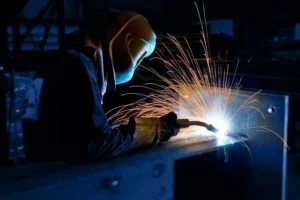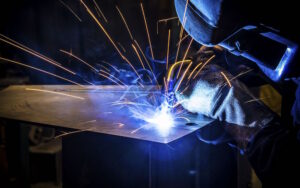
Sanitary pipe welding stands as a cornerstone in constructing and maintaining hygienic infrastructure, playing a pivotal role in industries such as pharmaceuticals, food and beverage, and biotechnology. The precision and quality of pipe welding directly impact the integrity of systems that transport liquids or gasses crucial for various processes. In this blog, we delve into the types of sanitary welding, exploring its significance, best practices, and the ever-evolving techniques that ensure compliance with stringent hygiene standards.
The Importance of Sanitary Pipe Welding in Industries
Sanitary welding goes beyond mere structural integrity; it is a critical component in ensuring the purity of the transported substances. Industries dealing with sensitive products, such as pharmaceuticals and food and beverage, require the highest level of cleanliness to meet regulatory standards. Contaminants or impurities introduced during the welding process can compromise the quality of the end product. Further, leading to severe consequences for both consumers and manufacturers.
Key Considerations in Sanitary Pipe Welding
Material Selection
Choosing suitable materials is fundamental in pipe welding. Stainless steel is the preferred choice due to its corrosion resistance, durability, and ease of cleaning. The material must also comply with industry standards and regulations. Hence, ensuring it can withstand the specific demands of the intended application.
Purge Gas Control
Maintaining a controlled atmosphere during welding is crucial to prevent oxidation and contamination. Purge gas, typically argon, creates an inert environment within the pipe, shielding the weld from atmospheric elements. Proper purge gas control ensures a clean and defect-free weld, upholding the hygienic standards required in industries like pharmaceuticals and biotechnology.
Surface Finish
The surface finish of the welded joint is paramount in sanitary applications. Smooth, crevice-free finishes eliminate potential sites for bacteria accumulation, facilitating thorough cleaning and minimizing the risk of contamination. Achieving the desired surface finish requires meticulous attention to detail during welding and post-weld treatments.
Best Practices for Pipe Welding
Tungsten Inert Gas (TIG) Welding
TIG welding is the preferred method for sanitary pipe welding due to its precision and ability to produce high-quality, clean welds. TIG welding allows for precise control over the heat input, minimizing the risk of distortion. Furthermore, it ensures a consistent and aesthetically pleasing weld. This technique is particularly advantageous when working with thin-walled pipes commonly used in sanitary applications.
Orbital Welding
Orbital welding has gained popularity in pipe welding for its automation capabilities, providing consistent and repeatable results. This method is particularly effective in large-scale production environments where precision and efficiency are paramount. Orbital welding systems offer advanced control over parameters such as travel speed, arc length, and gas flow. Hence, ensuring uniform welds across various pipe sizes.
Evolving Techniques in Pipe Welding
As technology advances, so do the techniques employed in sanitary pipe repair. Innovations such as laser and hybrid welding are being explored further to increase precision, efficiency, and overall weld quality. Laser welding, in particular, offers the advantage of minimal heat input. Thus, reducing the risk of distortion and maintaining the integrity of the sanitary system.
Quality Control Measures
Non-Destructive Testing (NDT)
To ensure the integrity of sanitary pipe welds, rigorous quality control measures must be in place. Non-destructive testing methods, such as ultrasonic testing and dye penetrant testing, are employed to detect any imperfections or defects in the welds without compromising the integrity of the pipes. These tests are essential for meeting industry standards and regulations.
Visual Inspection
Visual inspection remains a fundamental step in quality control. Welding professionals must examine the welds for any signs of discoloration, irregularities, or contamination. A keen eye for detail is crucial in identifying potential issues that could compromise the hygiene and functionality of the sanitary system.
Conclusion
In conclusion, mastering the art of sanitary pipe welding is essential for industries that prioritize hygiene and regulatory compliance. The meticulous selection of materials, control of purge gases, attention to surface finishes, and the application of advanced welding techniques collectively produce clean, durable, and reliable welded joints. As industries evolve, staying abreast of the latest technologies and best practices in pipe repair is imperative for professionals seeking to uphold the highest hygiene standards in their infrastructure projects. Contact us today for more information on types of welding or our prices.






